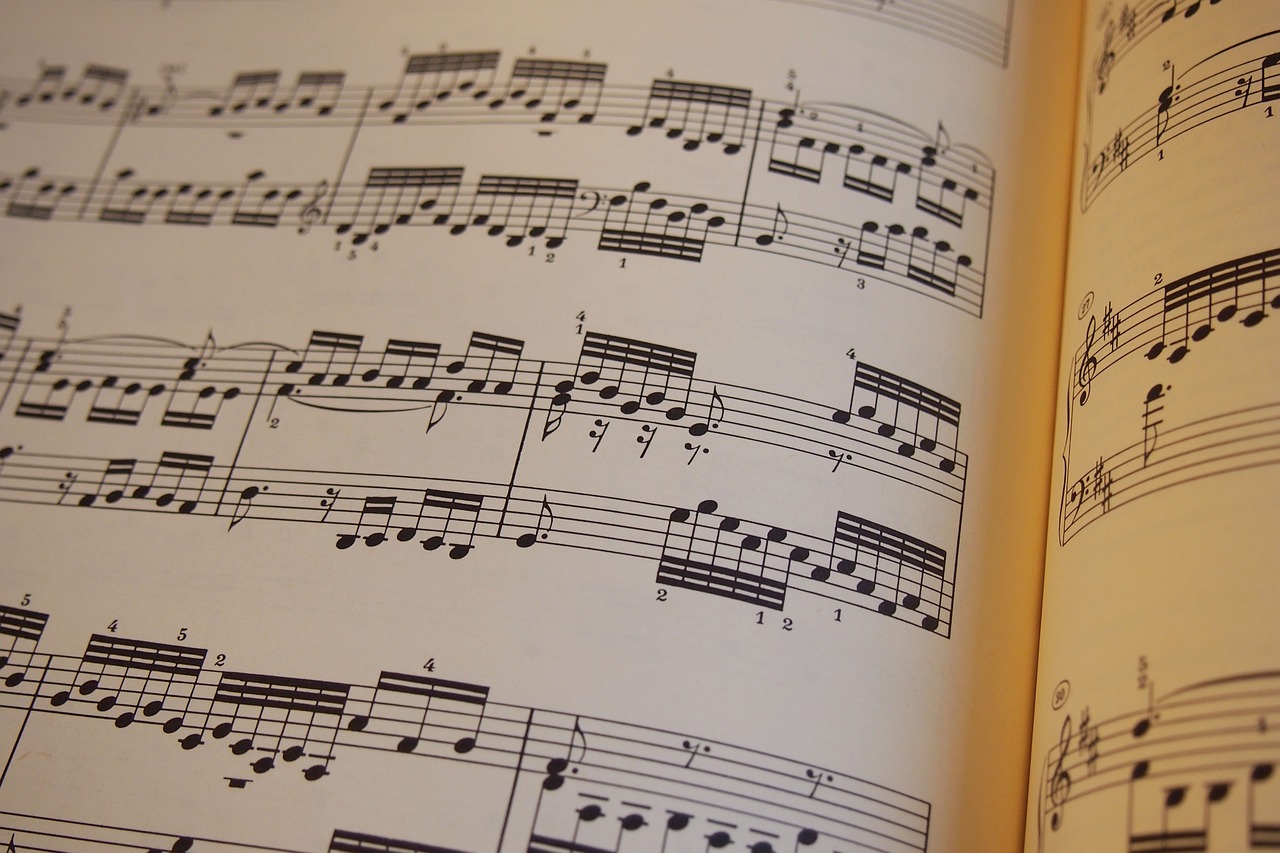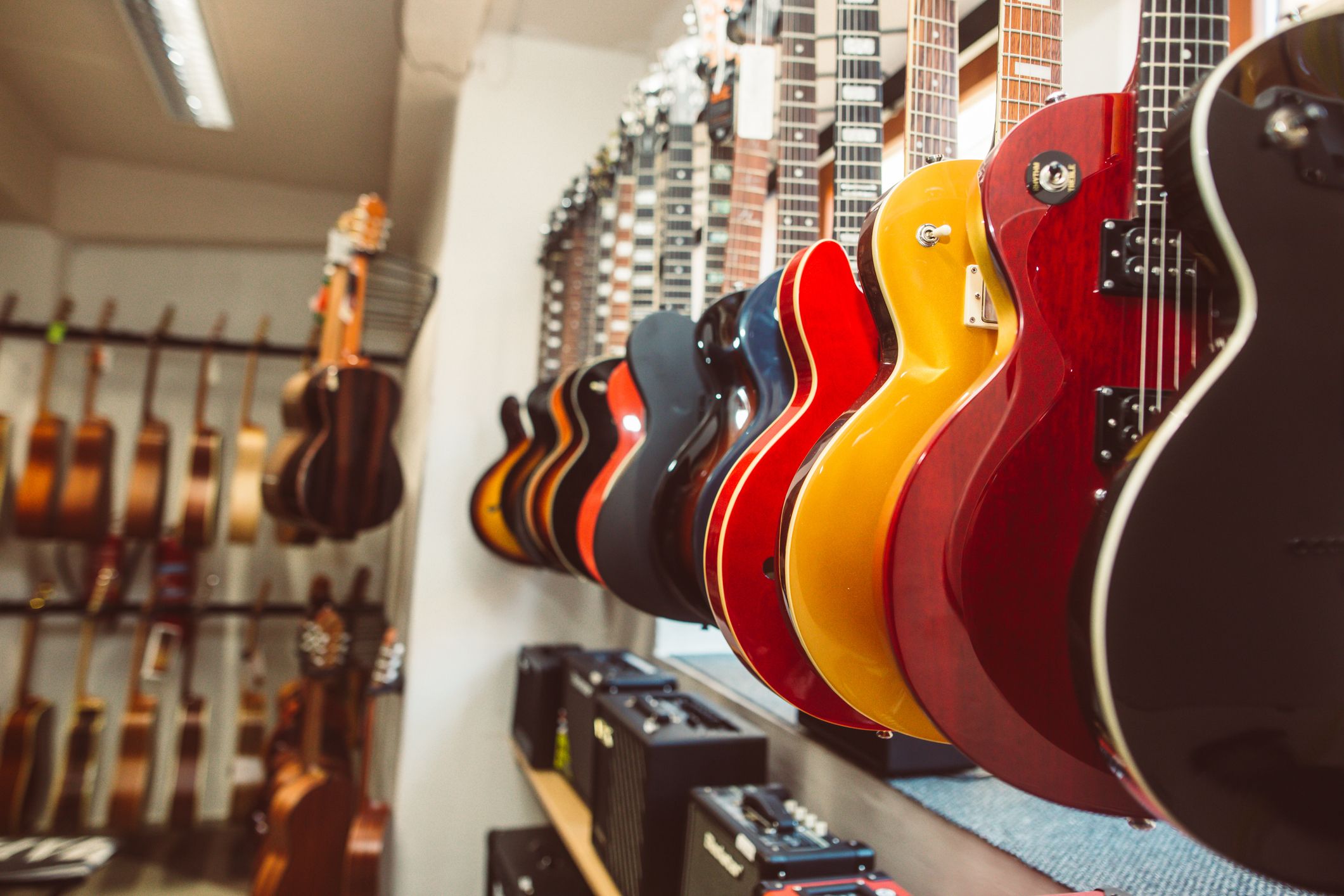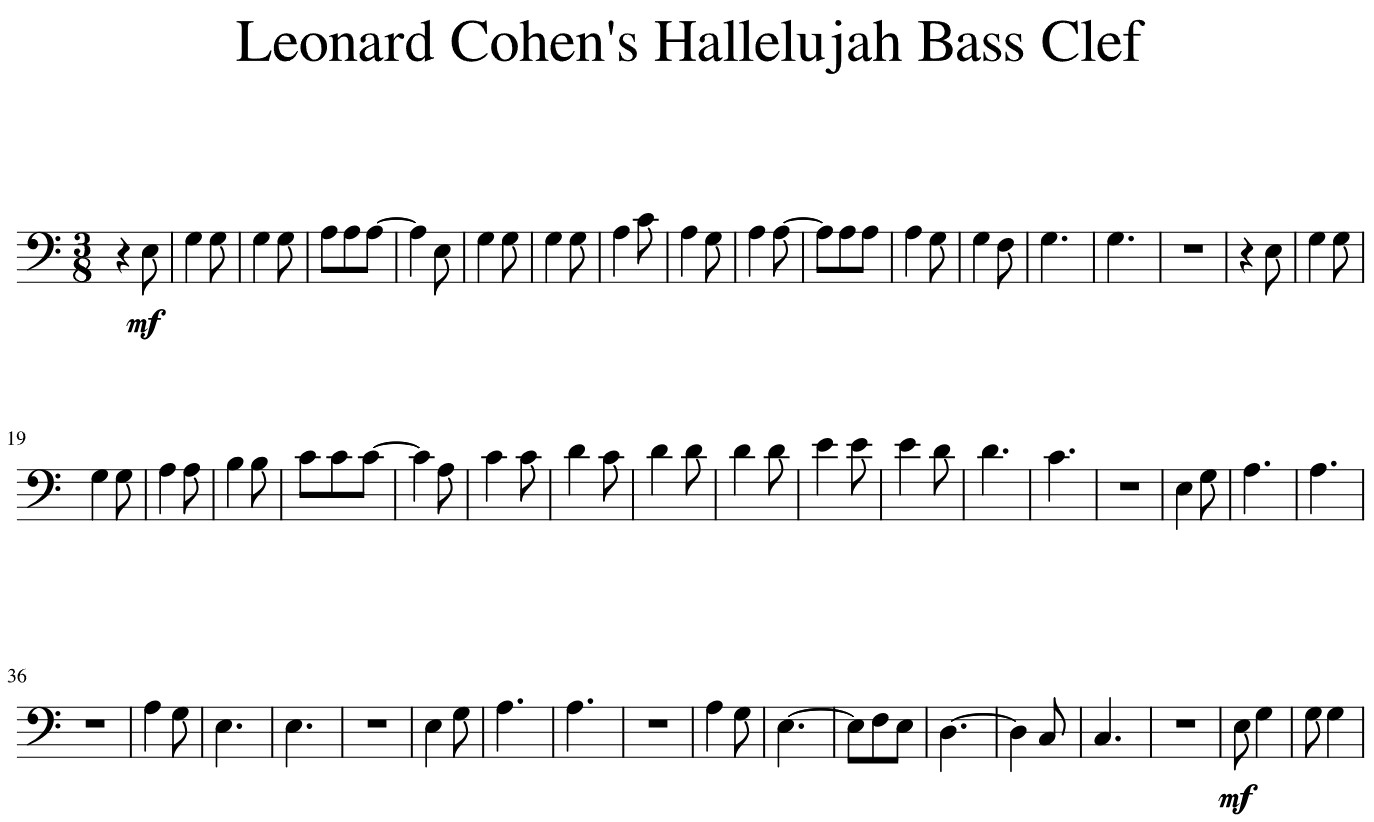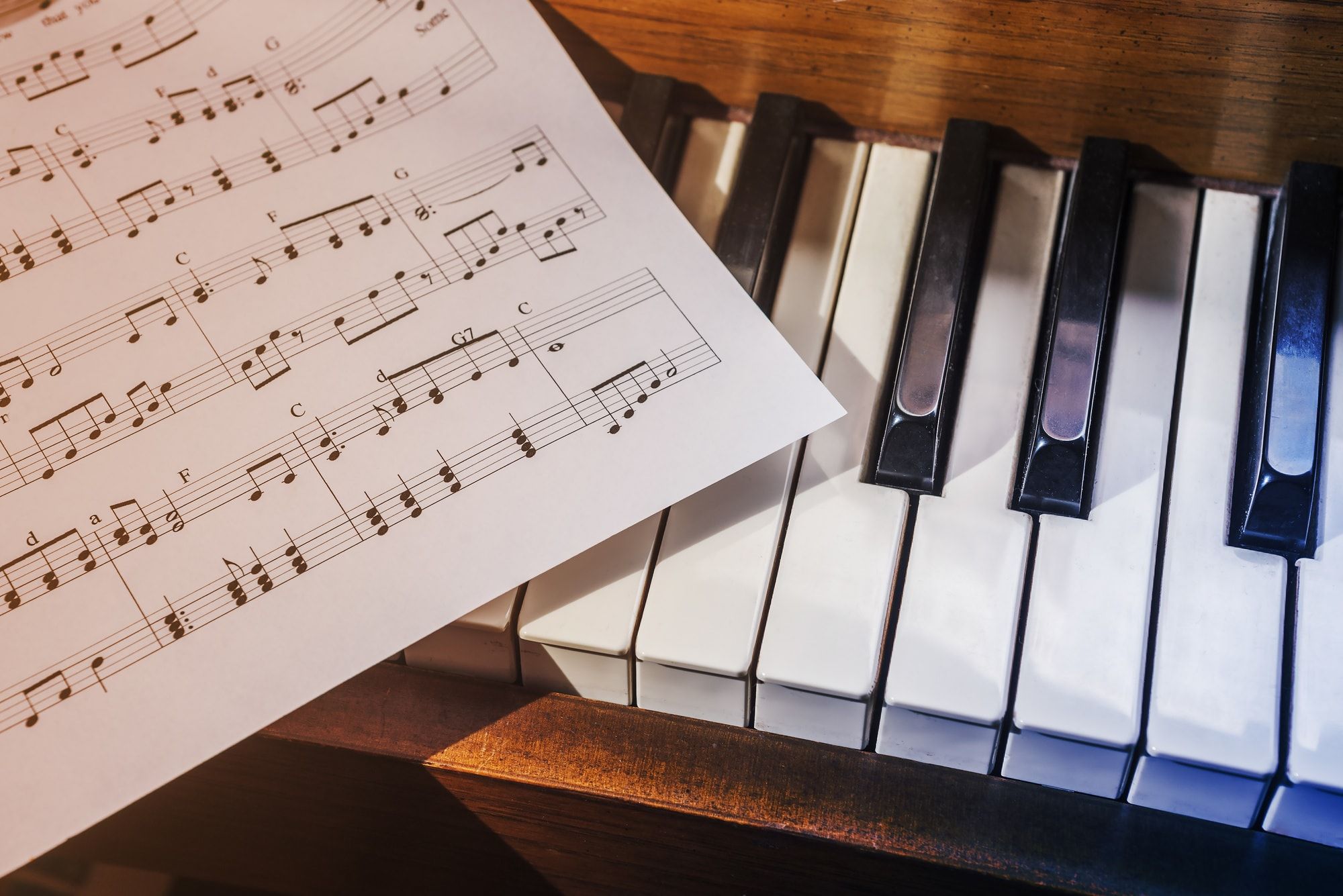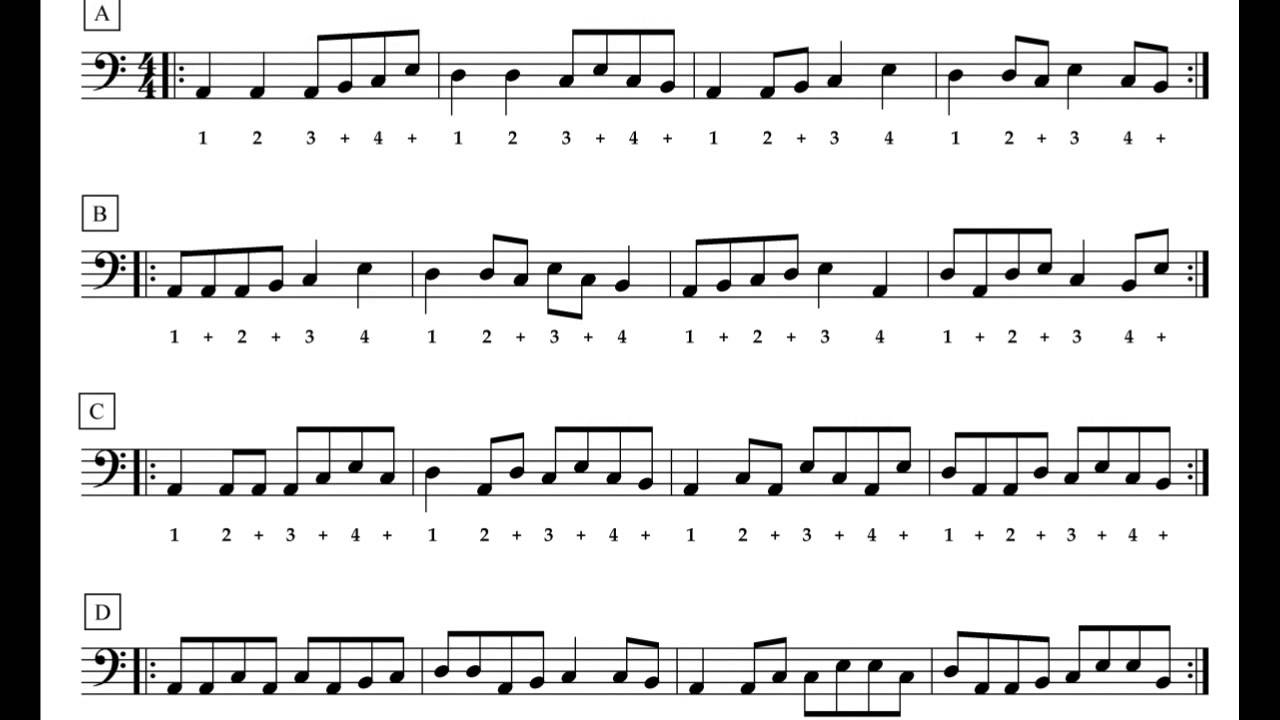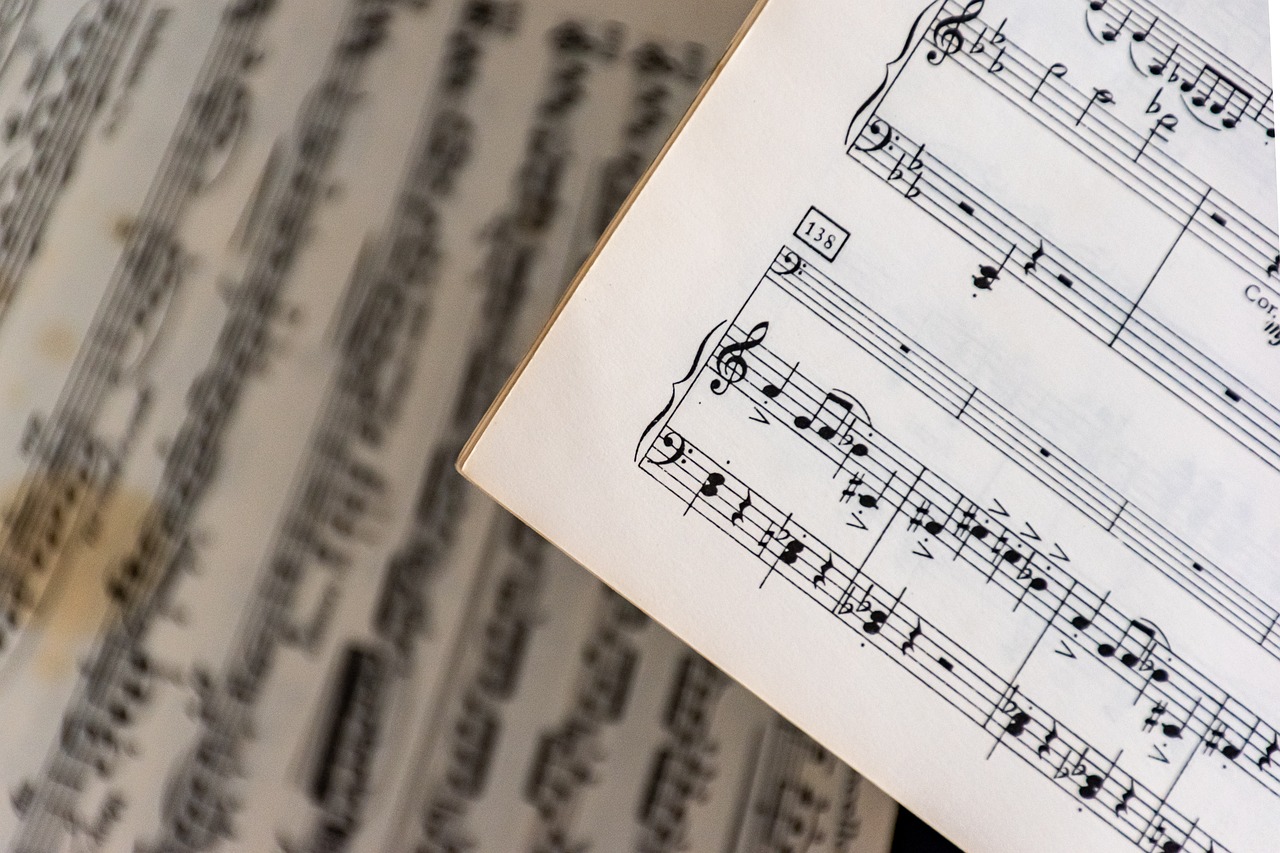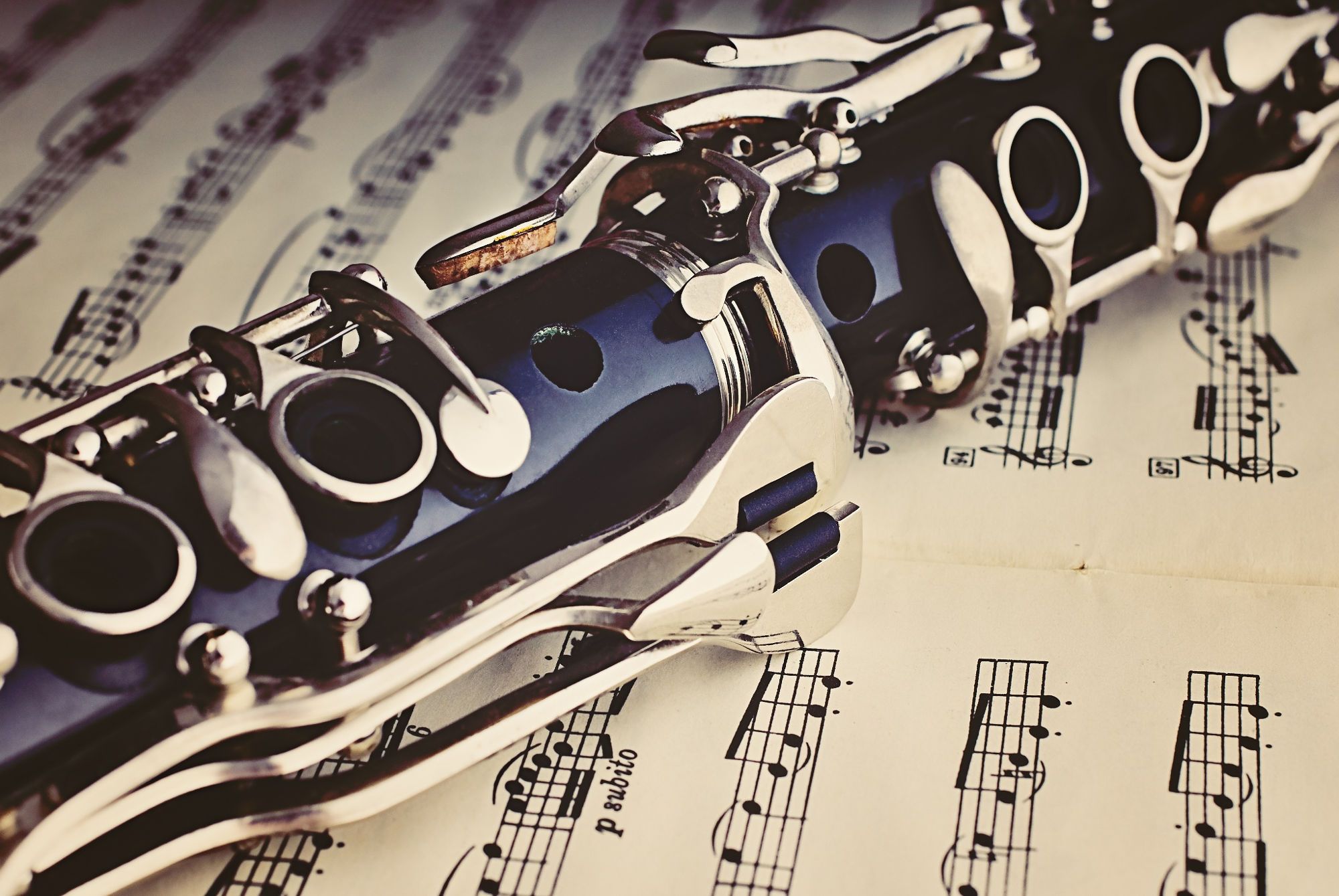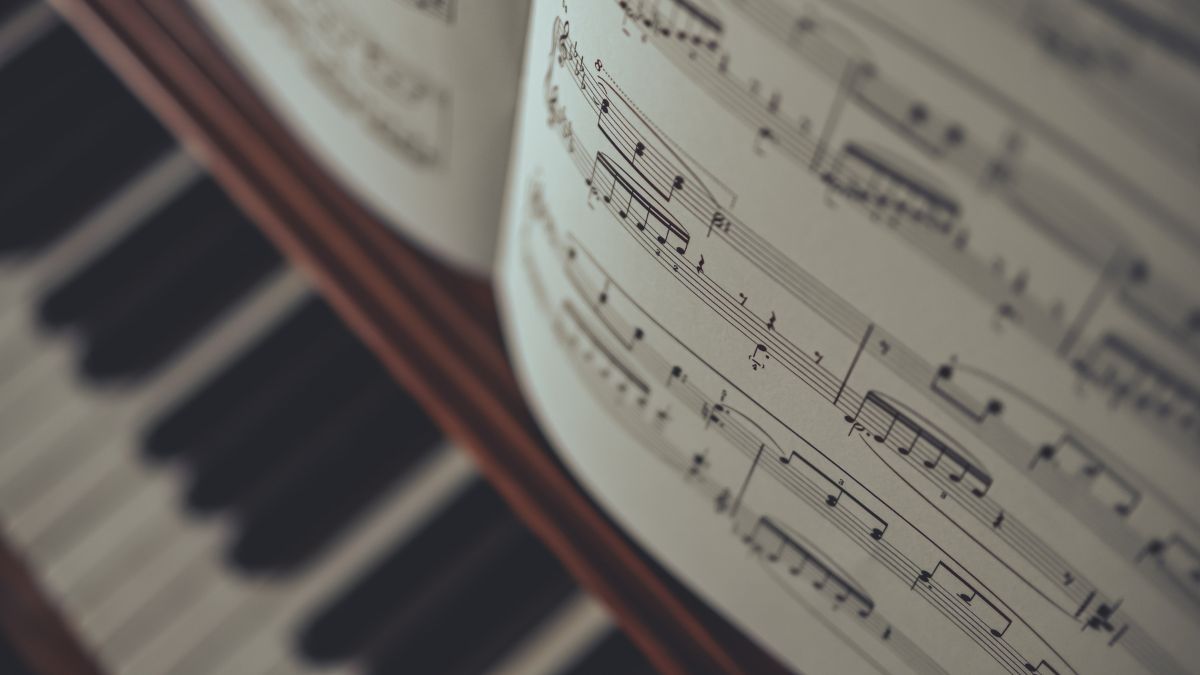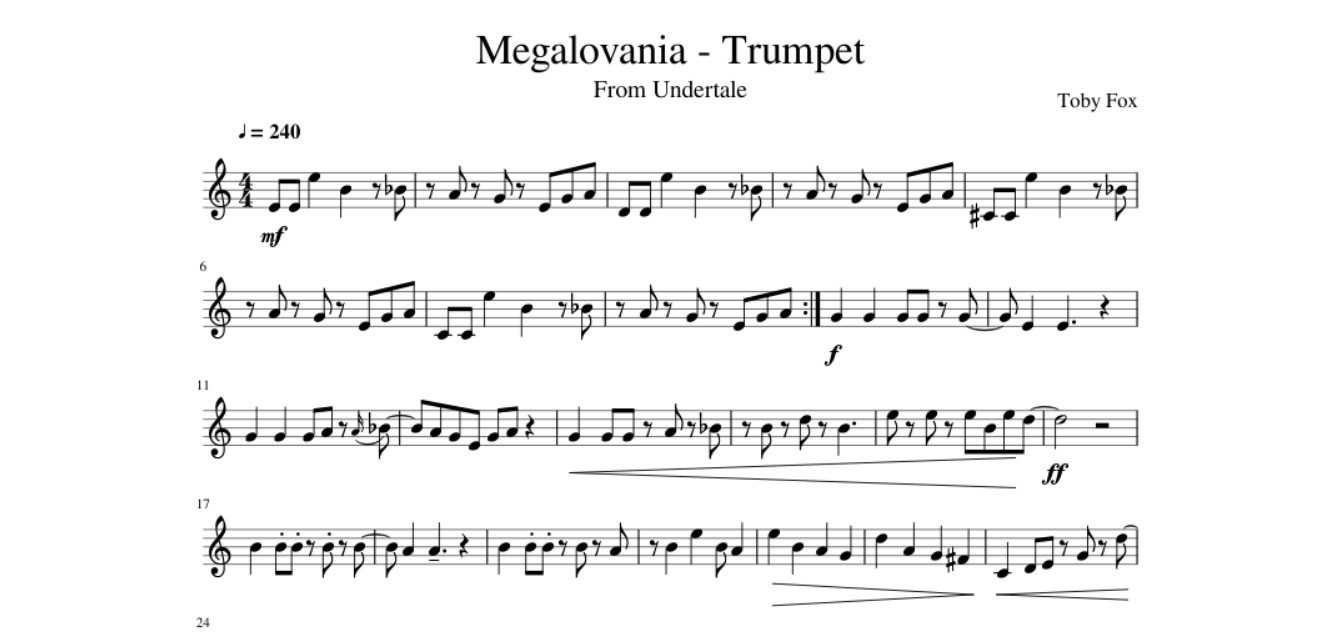Home>Production & Technology>Sheet Music>How To Read Guitar Notes On Sheet Music For Beginners
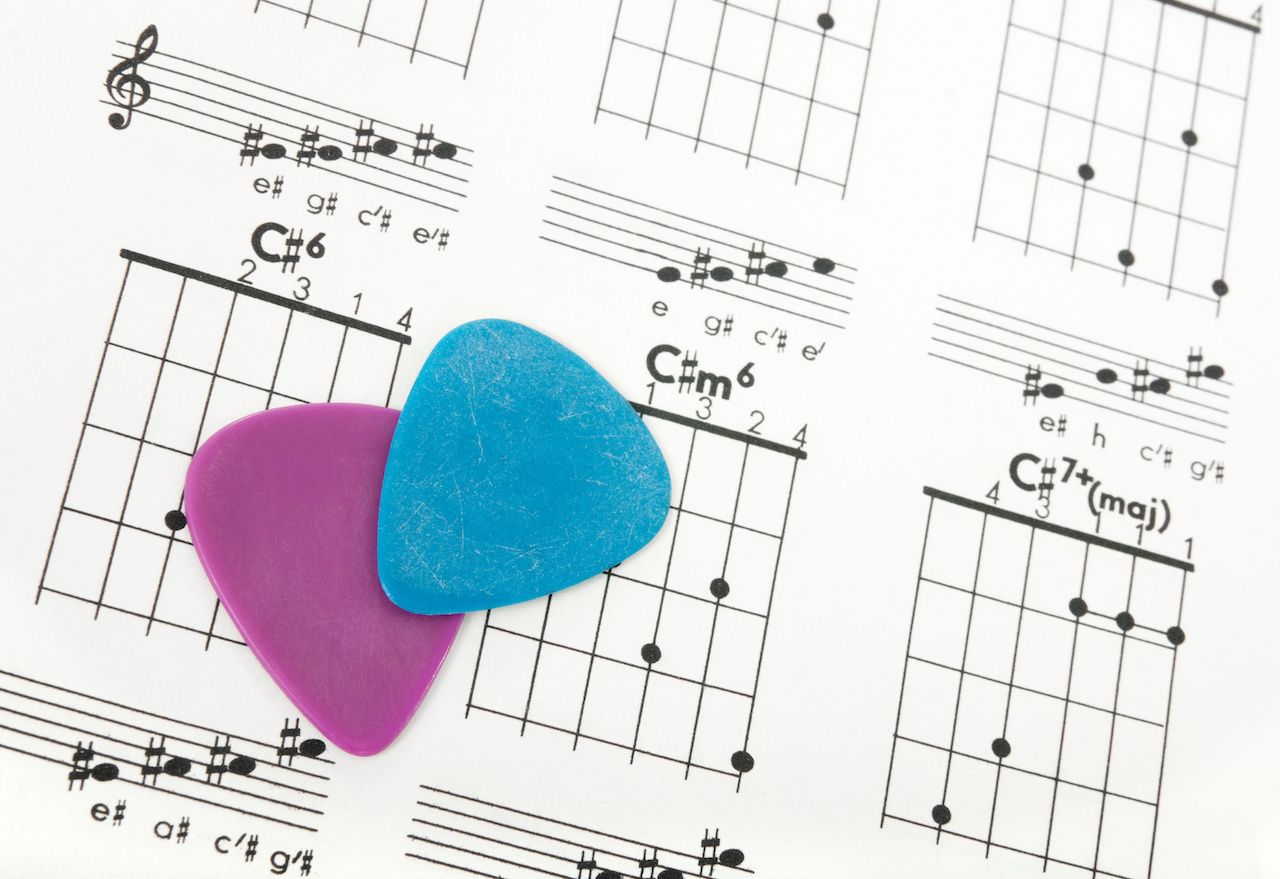

Sheet Music
How To Read Guitar Notes On Sheet Music For Beginners
Modified: February 1, 2024
Learn how to read guitar notes on sheet music for beginners. Master the basics of sheet music notation and start playing your favorite songs.
(Many of the links in this article redirect to a specific reviewed product. Your purchase of these products through affiliate links helps to generate commission for AudioLover.com, at no extra cost. Learn more)
Table of Contents
Introduction
Sheet music is a vital tool for musicians, allowing them to notate and share musical compositions. For aspiring guitarists, learning to read sheet music can greatly enhance their understanding of music theory and open up a world of possibilities in terms of playing various genres and styles. While some guitarists may rely solely on tabs or chord charts, being able to read standard notation on sheet music can provide a deeper level of musical comprehension.
In this article, we will guide beginners through the process of reading guitar notes on sheet music. We will break down the basics of sheet music notation, explore the guitar fretboard, and provide practical techniques to help you become proficient in deciphering guitar notes on the staff. Whether you’re a beginner or have some experience with playing the guitar, this guide will equip you with the necessary knowledge to read sheet music and expand your musical horizons.
Learning to read guitar notes on sheet music can unlock a wealth of opportunities. It allows you to play a wide range of musical genres, including classical, jazz, pop, and more. Additionally, understanding sheet music notation can help you communicate and collaborate with other musicians, as it serves as a universal language in the music world.
While reading sheet music may seem daunting at first, with practice and patience, it becomes second nature. This article aims to demystify the process and provide you with the tools and knowledge needed to comfortably read guitar notes on sheet music. So let’s dive in and explore the fascinating world of sheet music notation for guitar!
Understanding Sheet Music
Sheet music is a written form of musical notation that communicates the structure, rhythm, and pitch of a musical composition. It consists of a series of symbols, notations, and markings that convey specific instructions to the performer.
At its core, sheet music consists of two main components: the staff and the notes. The staff is a set of horizontal lines and spaces where the notes are placed to represent different pitches. The notes, represented by various shapes and symbols, indicate the pitch and duration of the musical sound.
When reading sheet music, it is important to understand the basic elements and terminology. Here are a few key terms to familiarize yourself with:
- Bar Lines: These vertical lines divide the sheet music into measures or bars, which help organize the rhythm of the music. Each measure typically contains a specific number of beats.
- Time Signature: Located at the beginning of a piece, the time signature indicates the meter or time structure of the music. It consists of two numbers stacked vertically, with the top number denoting the number of beats per measure and the bottom number indicating the note value that receives one beat.
- Key Signature: This symbol, typically found at the beginning of a staff, indicates the key of the music and determines which notes are altered throughout the piece.
- Tempo Marking: Tempo refers to the speed or pace of the music. Tempo markings, such as “Moderato” (moderate), “Allegro” (fast), or “Largo” (slow), provide guidance on how to perform the piece.
- Dynamics: Dynamics indicate the volume or intensity of the music. Symbols such as “p” (piano, soft) and “f” (forte, loud) are used to instruct the performer on how to interpret the dynamic level.
Having a solid understanding of these basic elements will greatly assist you in reading sheet music accurately. By familiarizing yourself with the terminology and symbols, you’ll be able to decipher the musical instructions more effectively and bring the composition to life when you play it on your guitar.
Basic Music Terminology
When learning to read guitar notes on sheet music, it is essential to familiarize yourself with some basic music terminology. Understanding these terms will help you navigate through the notation and grasp the musical concepts more effectively.
- Pitch: Pitch refers to the perceived frequency of a sound and is represented by the placement of notes on the staff. Lower pitches are placed towards the bottom, while higher pitches are placed towards the top.
- Note Duration: Note duration indicates how long a note is played. It is indicated by the shape of the note and the presence of flags or beams. Common note durations include whole notes, half notes, quarter notes, eighth notes, and sixteenth notes.
- Rests: Rests are symbols that represent periods of silence or pauses in the music. Rests have durations just like notes and are indicated by specific symbols.
- Accidentals: Accidentals are symbols that alter the pitch of a note. The most common accidental is the sharp (#), which raises the pitch of a note by a half step. Other accidentals include the flat (b), which lowers the pitch by a half step, and the natural (♮), which cancels a previous accidental.
- Chords: Chords are groups of notes played together. They are often represented by stacked vertical lines with the chord symbol written above the staff.
- Scale: A scale is a sequence of notes arranged in ascending or descending order. Scales serve as the foundation for melodies and harmonies in music. Common scales used in guitar playing include major, minor, pentatonic, and blues scales.
- Articulation: Articulation refers to the various techniques used to shape and articulate notes. Symbols such as staccato dots (.) or legato lines (-) indicate how to play the notes, whether short and detached or smooth and connected.
By familiarizing yourself with these basic music terms, you’ll be able to navigate through sheet music more effectively and interpret the musical instructions accurately. Take the time to study and understand these terms, as they will serve as a solid foundation for your journey towards reading guitar notes on sheet music.
The Staff and Clefs
The staff is a set of horizontal lines and spaces where musical notes are placed to indicate their pitch. It consists of five lines and four spaces, with each line and space representing a specific pitch. Understanding how the staff works is crucial when reading guitar notes on sheet music.
To further specify the pitch of the notes on the staff, different clefs are used. The most common clefs in music notation are the treble clef and the bass clef.
The treble clef, also known as the G clef, is predominantly used for notating higher-pitched instruments, including the guitar. It is identified by the curly tail that wraps around the second line from the bottom. Notes written on or above the third line of the treble clef staff are typically played by instruments using this clef, including the guitar.
The bass clef, also known as the F clef, is primarily used for notating lower-pitched instruments. It is identified by the two dots that surround the line representing the note F. Notes written below the third line of the bass clef staff are generally played by instruments using this clef, such as the bass guitar.
For guitarists, reading sheet music often requires the ability to read from both the treble and bass clefs. This is because the guitar is capable of playing notes across a wide range of pitches. The top four strings of the guitar, from lowest to highest, are traditionally tuned to the notes E, A, D, and G, which align with the pitches on the staff.
Being familiar with both the treble and bass clefs will enable you to read guitar notes accurately on sheet music. It is essential to learn the notes associated with each line and space of both clefs to recognize the specific pitches and play them correctly on your guitar.
Reading Guitar Notes on Sheet Music
Reading guitar notes on sheet music involves translating the symbols and notations on the staff into the corresponding pitches on the guitar fretboard. By understanding the relationship between the staff and the guitar fretboard, you can effectively read and play the notes written on the sheet music.
The first step in reading guitar notes is to identify the location of each note on the guitar fretboard. The guitar is divided into different frets, with each fret representing a specific pitch. The notes on the guitar fretboard are arranged in a repeating pattern of open strings and fretted notes.
Starting from the open sixth string, which is the thickest string of the guitar, the notes ascend in pitch as you move towards the body of the guitar. The open strings on the guitar are typically tuned to the notes E, A, D, G, B, and E, from the thickest to the thinnest string.
When a note is written on a specific line or space on the staff, you need to locate that note on the corresponding string and fret on the guitar. For example, if a note is written on the third line of the treble clef staff, you would play that note on the third string of the guitar, using the appropriate fret position.
It is important to note that guitar sheet music utilizes various types of notation to indicate the specific techniques and expressions required to play the music accurately. These notations include but are not limited to fingerings, bends, slides, hammer-ons, pull-offs, vibrato, and more.
As you become comfortable with locating the notes on the guitar fretboard and understanding the various notations, reading guitar notes on sheet music becomes more intuitive. With practice, you’ll be able to read and play the music fluently, translating the written sheet music into powerful guitar melodies and chords.
The Notes on the Guitar Fretboard
Understanding the notes on the guitar fretboard is crucial when reading guitar notes on sheet music. The guitar is a versatile instrument with a wide range of pitches, and knowing the placement of each note on the fretboard will greatly assist you in reading and playing sheet music accurately.
The guitar fretboard consists of six strings, and each string is assigned a specific note when played open (without any fingers pressing down). Starting from the thickest string (low E string) to the thinnest string (high E string), the open string notes on a standard-tuned guitar are E, A, D, G, B, and E, respectively.
Each fret on the guitar represents a half step or one note. For example, when you press down the first fret on the low E string, it will produce an F note. Similarly, pressing down the third fret on the same string will produce a G note.
To locate a specific note on the guitar fretboard, you can use different techniques such as memorizing the notes on each string or using reference points like the fifth or twelfth frets. Understanding the musical interval patterns and using mnemonic devices can also be helpful in memorizing the notes on the fretboard.
It’s important to note that the notes on the guitar fretboard repeat at the twelfth fret. This means that the notes on the twelfth fret are the same as the open string notes but an octave higher. For example, the twelfth fret on the low E string will produce another E note.
Mastering the notes on the guitar fretboard will empower you to quickly navigate through sheet music, identify the correct positions to play the notes, and execute them with precision. Regular practice and repetition will enhance your familiarity with the fretboard, making reading guitar notes on sheet music a more seamless and enjoyable experience.
Reading Guitar Notation on the Staff
Reading guitar notation on the staff involves deciphering the symbols and notations written on the lines and spaces to play the correct notes on the guitar. The staff provides a visual representation of the pitch and duration of each note, allowing you to accurately translate the music from the sheet to the fretboard.
Each line and space on the staff corresponds to a specific note. In standard guitar notation, the notes are represented by oval-shaped noteheads placed on the lines or within the spaces. The vertical position of the notehead indicates the pitch of the note, while the note’s shape and presence of stems or flags determine its duration.
The placement of the notes on the staff corresponds to the location of the same pitch on the guitar fretboard. For example, if a note is written on the top line of the treble clef staff, it represents a high-pitched note that should be played on the guitar’s higher strings and frets.
In addition to the noteheads, guitar notation may also include other symbols and markings to indicate various techniques and expressions. These include but are not limited to:
- Fingerings: Numbers placed on the noteheads or below the staff indicate which finger to use to play the note. This helps with proper finger placement and fingering positions on the fretboard.
- Articulation: Symbols such as staccato dots (.) or legato lines (-) indicate how a note should be played, whether it should be short and detached or smooth and connected to the following note.
- Dynamics: Symbols such as “p” (piano, soft) and “f” (forte, loud) indicate the volume or intensity of the music. These markings guide the guitarist in interpreting and conveying the desired dynamics of the piece.
- Techniques: Notations such as bends, slides, hammer-ons, pull-offs, vibrato, and tremolo picking may be indicated with specific symbols or abbreviations. These techniques add expression and character to the music and require specific fingerings and articulations on the fretboard.
By understanding how to interpret these notations and symbols on sheet music, you can effectively translate them onto the guitar fretboard. Taking the time to familiarize yourself with the different markings and techniques will allow you to accurately reproduce the music and bring it to life with your guitar playing.
Tips and Tricks for Reading Guitar Notes
Reading guitar notes on sheet music can be challenging at first, but with practice and the following tips and tricks, you can improve your reading skills and become more proficient:
- Memorize the Open String Notes: Knowing the open string notes (E, A, D, G, B, E) is a fundamental step in reading guitar notes. This knowledge serves as a reference point and helps you quickly identify the pitch of the notes on the staff.
- Practice Sight-Reading: Sight-reading exercises are invaluable for improving your ability to quickly recognize and play the notes on the guitar. Start with simple melodies and gradually progress to more complex pieces.
- Use Mnemonic Devices: Mnemonic devices, such as “Every Good Boy Deserves Fudge” for the notes on the lines of the treble clef or “Good Boys Do Fine Always” for the spaces, can help you memorize the note names on the staff.
- Learn the Patterns: Recognize the patterns and intervals between notes on the staff and the guitar fretboard. Identifying intervals, such as a fourth or a fifth, can help you quickly navigate and play the correct notes.
- Study Music Theory: Understanding basic music theory, such as scales, chords, and key signatures, can significantly aid in reading guitar notes. It provides a broader context and helps you make connections between the notes on the sheet music and the guitar fretboard.
- Slow Down and Take Your Time: Don’t rush through the music. Take the time to carefully read and interpret the notes on the staff before attempting to play them on the guitar. This will help you avoid mistakes and develop accuracy.
- Use Sheet Music Apps and Programs: Utilize technology to your advantage by using sheet music apps or computer programs that offer interactive features and audio playback. These tools can assist in visualizing and auditioning the music, enhancing your understanding and interpretation.
- Seek Guidance from an Instructor: Working with a guitar teacher or mentor can provide valuable guidance and feedback as you learn to read guitar notes. They can offer personalized instruction and help you overcome any challenges you may encounter.
Remember, reading guitar notes on sheet music is a skill that develops over time. Be patient with yourself and practice regularly. As you become more comfortable with reading notes, you’ll find that it becomes easier to interpret and play music from sheet music, expanding your musical repertoire and creativity on the guitar.
Conclusion
Learning to read guitar notes on sheet music opens up a world of possibilities for guitarists. It enhances your understanding of music theory, allows you to play various genres and styles, and enables effective collaboration with other musicians.
Throughout this article, we have covered the fundamentals of reading guitar notes on sheet music. We explored the basic elements of sheet music, such as the staff and clefs, and discussed the importance of understanding music terminology. We also delved into the relationship between the guitar fretboard and the notes on the staff, as well as provided tips and tricks to improve your reading skills.
As with any new skill, reading guitar notes on sheet music requires practice, patience, and persistence. Start by familiarizing yourself with the open string notes and gradually progress to more complex melodies and compositions. Practice sight-reading exercises and embrace the use of mnemonic devices to aid your memory. Focus on learning the patterns and intervals on the fretboard, and don’t be afraid to seek guidance from an instructor or utilize sheet music apps or programs.
By investing time and effort into mastering the ability to read guitar notes, you will unlock a vast repertoire of music to explore and perform. Whether you dream of playing classical compositions, strumming along to your favorite songs, or improvising with fellow musicians, reading guitar notes on sheet music will be an invaluable skill on your musical journey.
So, take that sheet music, grab your guitar, and immerse yourself in the fascinating world of reading guitar notes. With dedication and practice, you’ll be able to effortlessly interpret and play beautiful music from the page to the fretboard.


